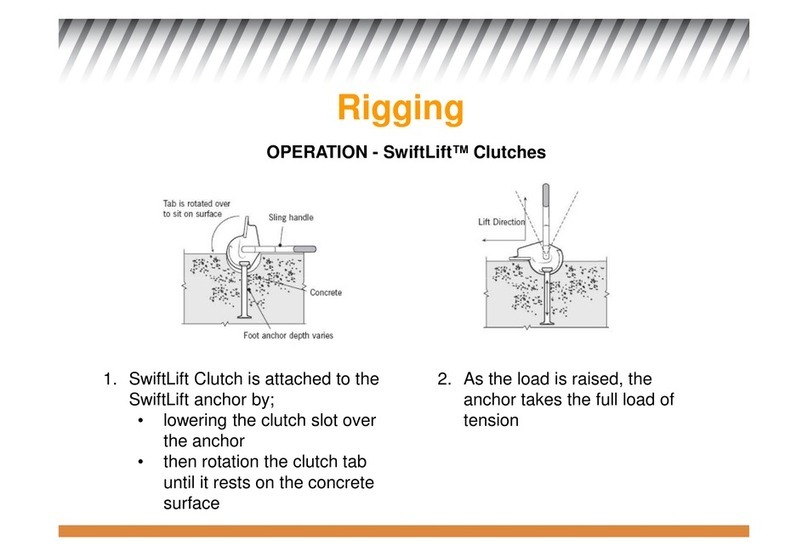• Start moving the load along the beam only after it has
been attached correctly and all personnel are clear of
the danger zone.
• Be aware of hazards when setting up/folding down,
eg. hands/fingers trapped in rotating parts.
• It is essential for safety that the P O R TA -GANTRY is
withdrawn from use immediately should:
1) any doubt arise about its condition for safe use or;
2) it has been used to arrest a fall and not be used
again until confirmed in writing by a competent
person that it is acceptable to do so.
Attaching the load
The operator must ensure that the hoist is attached in
a manner that does not expose him or other personnel
to danger by the hoist, chain(s) or the load.
Temperature range
The
P O RTA -GANTRY
can be operated in ambient dry
temperatures between -20° and +55°C (-4°F to 131°F).
Consult your supplier in case of extreme working conditions.
If used in sub-zero and wet conditions, fall arrest
appliances characteristics may change.
Regulations
The
P O RTA -GANTRY
complies with the following
regulations:
PPE Directive 89/686/EEC, Machinery Directive
2006/42/EC, The Provision and Use of Work Equipment
Regulations 1998 (S.I. 1998 No. 2306), The Lifting
Operations and Lifting Equipment Regulations 1998
(S.I. 1998 No. 2307), and/or safety regulations of the
respective country for using manual lifting equipment
must be strictly adhered to. EN795:1997, ANSI Z359.1-
2007 and CSA Z259.16-04 certified.
INSPECTION/MAINTENANCE
Regular inspections
To ensure that the gantry frame remains in safe
working order it must be subjected to thorough periodic
inspections by a competent person. Inspections are to be
6 monthly for personnel lifting and 12 monthly for goods
only unless adverse working conditions or profile of use
dictate shorter periods. The components of the gantry
frame are to be inspected for damage, wear, corrosion
or other irregularities. To check for worn parts it may be
necessary to disassemble the gantry frame.
Repairs should only be carried out by an approved
specialist workshop that uses original spare parts.
If using the Gantry in explosive atmospheres see
additional section titled ATEX.
Inspections are instigated by the user. If detailed
information is required on inspection and test criteria,
please refer to your supplier’s technical department.
Please refer to pg 19 for the equipment inspection log.
Maintenance/Repair
In order to ensure correct operation not only the
operations instructions, but also the conditions for
inspection and maintenance must be complied with.
If defects are found stop using the P O RTA -GANTRY
immediately.
No alterations or additions to the equipment should be
made without the written consent of the manufacturer.
Any repair shall only be carried out in accordance with
the manufacturer’s procedures.
It is recommended to maintain the equipment in a clean
and dry manner. Cleaning is suggested using a sponge
or cloth with warm, soapy water (using diluted domestic
washing up liquid), rinsing and allowing to dry.




























